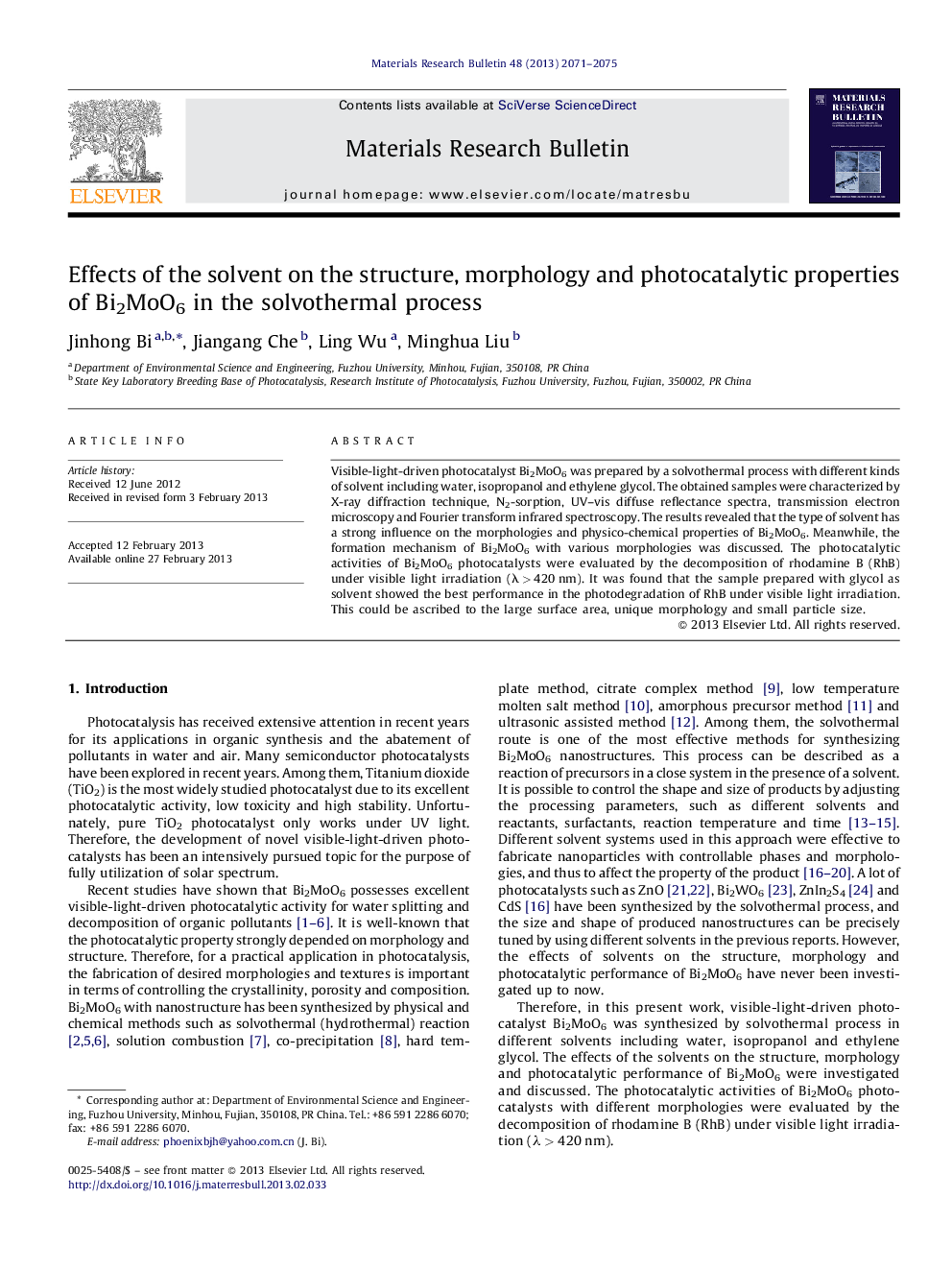| Article ID | Journal | Published Year | Pages | File Type |
|---|---|---|---|---|
| 1488686 | Materials Research Bulletin | 2013 | 5 Pages |
Visible-light-driven photocatalyst Bi2MoO6 was prepared by a solvothermal process with different kinds of solvent including water, isopropanol and ethylene glycol. The obtained samples were characterized by X-ray diffraction technique, N2-sorption, UV–vis diffuse reflectance spectra, transmission electron microscopy and Fourier transform infrared spectroscopy. The results revealed that the type of solvent has a strong influence on the morphologies and physico-chemical properties of Bi2MoO6. Meanwhile, the formation mechanism of Bi2MoO6 with various morphologies was discussed. The photocatalytic activities of Bi2MoO6 photocatalysts were evaluated by the decomposition of rhodamine B (RhB) under visible light irradiation (λ > 420 nm). It was found that the sample prepared with glycol as solvent showed the best performance in the photodegradation of RhB under visible light irradiation. This could be ascribed to the large surface area, unique morphology and small particle size.
Graphical abstractVarious nanostructure Bi2MoO6 photocatalysts have been prepared by a solvothermal process via simply altering the used solvent. It is revealed that the type of solvents has a strong influence on the morphology of Bi2MoO6. This could be understood in terms of the reaction media effect on the crystal growth. The photocatalytic experiments for the decomposition of RhB demonstrate that the samples prepared by different solvents show different photocatalytic activity. The highest photocatalytic activity is obtained by the sample with glycol as solvent.Figure optionsDownload full-size imageDownload as PowerPoint slideHighlights► The used solvent in the synthesis can affect the morphology and size of Bi2MoO6. ► Different solvent in the reaction leads to different surface area and pore size. ► The highest photocatalytic activity is obtained by the sample prepared in glycol. ► The high activity is mainly due to the large surface area and small particle size.
